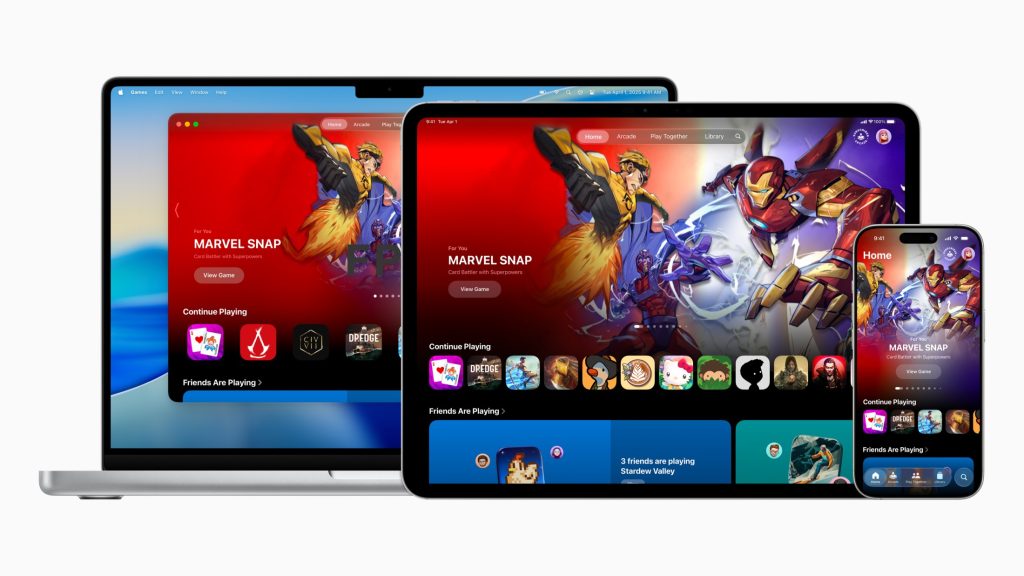Apple has unveiled Metal 4, an overhaul of its graphics API that brings native AI capabilities alongside improved gaming performance. The announcement, made during the company’s WWDC 2025 developer showcase, represents Apple’s latest attempt to woo both game developers and AI enthusiasts.
Apple’s transition to its own silicon has been impressively smooth, but developers are still discovering how to squeeze every ounce of performance from these chips. Metal 4 seems designed to address this, with what Apple calls “streamlined API” features that cut down overhead and manage resources more intelligently.
The compilation process has received particular attention. Anyone who’s twiddled their thumbs waiting for shaders to compile will appreciate the new approaches to slash runtime compilation delays.
What’s clever about Metal 4 is how it builds upon the familiar MTLDevice framework. Studios can adopt new features incrementally rather than rewriting entire applications—a pragmatic approach that acknowledges the realities of development schedules and resources.
Metal 4 delivers AI integration that actually makes sense
Metal 4 packs native support for machine learning. In an era where “AI” seems slapped onto every product update, Apple’s approach appears somewhat thought-through.
Tensors, the mathematical objects underpinning much of modern AI, are now first-class citizens in Metal’s API and shading language. This isn’t just technical jargon; it means developers can weave machine learning directly into graphics workflows without the performance penalties of jumping between separate frameworks.
This integration works at multiple levels. Want to run a complex neural network? You can execute it via command line. Need more granular control? Embed inference operations directly alongside your shader code. The end result could mean things like real-time style transfer effects or AI-enhanced rendering that dynamically adapts to scene complexity.
Gaming receives a much-needed boost with Metal 4
Apple’s relationship with gaming has been complicated, to put it mildly. Metal 4 won’t single-handedly transform Macs into gaming powerhouses overnight, but it does introduce several technologies that could help close the gap.
The new placement sparse resources functionality allows developers to be smarter about memory usage—crucial when pushing high-fidelity graphics. Meanwhile, the familiar encoding and synchronisation APIs should make porting existing titles from other platforms considerably less painful, potentially addressing one of the biggest obstacles to Mac gaming adoption.
Shader compilation, long the bane of game developers, receives substantial attention with a new dedicated compilation context to manage quality of service. Pipeline harvesting has been enhanced to accelerate ahead-of-time compilation, while common Metal IR enables reuse of shader compilation results across different render pipelines. In plain English: games should load faster and run smoother.
MetalFX and ray tracing
Graphics enthusiasts will be pleased to see improvements to Apple’s MetalFX upscaling technology, which now includes integrated denoising. This should deliver sharper, cleaner visuals without the performance hit of native resolution rendering. Apple has also introduced frame interpolation support, which could boost perceived frame rates.
Ray tracing capabilities, which create those gorgeous reflections and lighting effects in modern games, have been refined with intersection function buffers providing more flexible indexing. Developers now have finer control over acceleration structure builds with flags that prioritise either speed or memory efficiency.
While these improvements won’t immediately catapult Apple to the forefront of gaming hardware, they represent meaningful steps towards making Macs and iPads more viable gaming platforms.
Less painful game porting
The third iteration of Apple’s Game Porting Toolkit arrives alongside Metal 4, expanding support for evaluating Windows games on macOS.
With an enhanced instruction set, sparse resources, and experimental implementation of Apple’s visual enhancement technologies, the toolkit aims to reduce friction for studios considering Mac versions of their titles.
Developers can now build and debug remotely from Microsoft Visual Studio—a small but significant nod to the workflows already established in many studios. The Metal shader converter allows developers to enhance HLSL shaders with Apple-specific GPU features, while C++ developers can access Metal 4 APIs through Metal-cpp.
Apple’s continued investment in Metal signals serious intent in both high-performance computing and gaming. The native machine learning support is particularly timely as developers across industries scramble to integrate AI functionality into their applications.
For gamers who’ve long lamented the second-class status of Mac gaming, these improvements might not deliver an immediate revolution, but they do suggest Apple is listening and reducing barriers for game developers considering their platforms.
(Image credit: Apple)
See also: Apple to open its garden for developers building Watch widgets

Looking to revamp your digital transformation strategy? Learn more about Digital Transformation Week taking place in Amsterdam, California, and London. The comprehensive event is co-located with IoT Tech Expo, AI & Big Data Expo, Cyber Security & Cloud Expo, and other leading events.
Explore other upcoming enterprise technology events and webinars powered by TechForge here.


